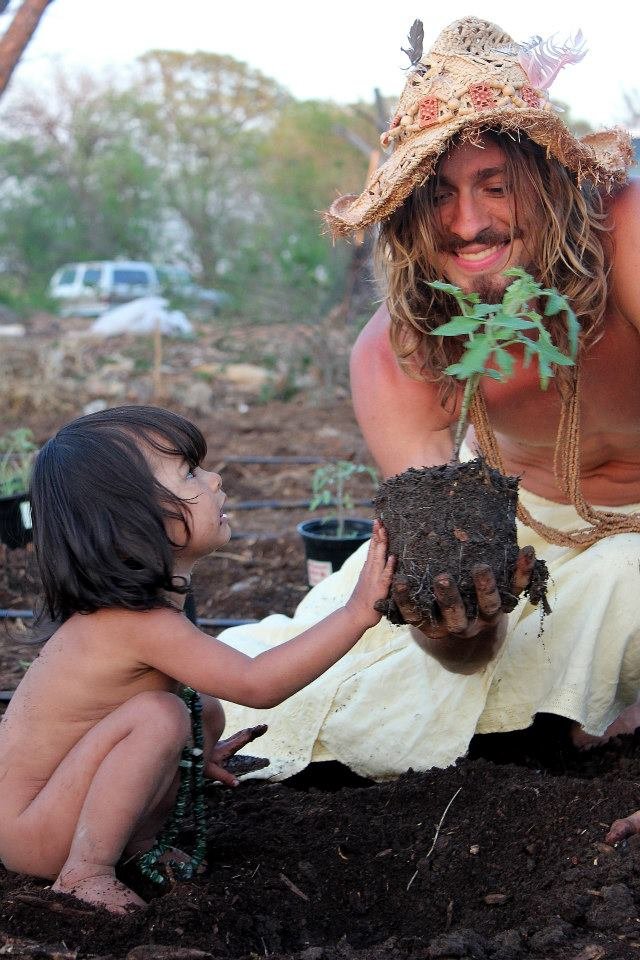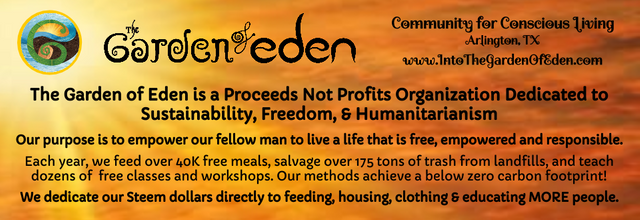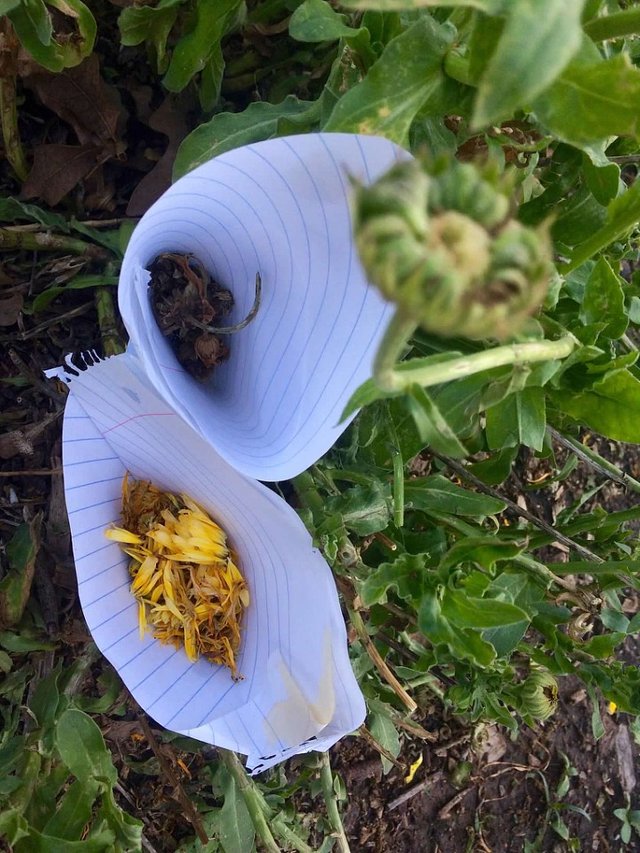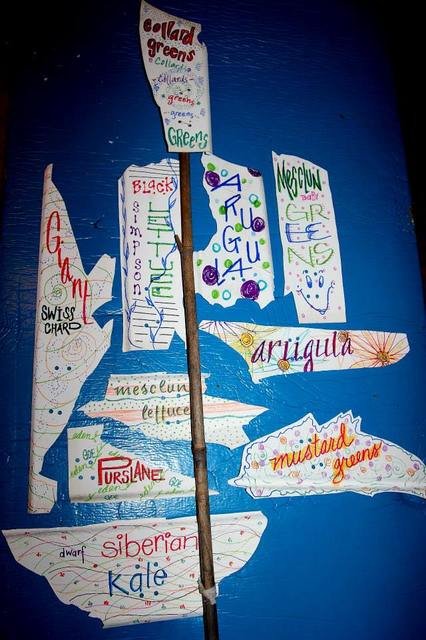Basics Of Sustainable Gardening: How to Sprout Seeds Indoors. Plant & Grow Your Own Food & Medicine!
There are several ways for humans
to help nature sprout seeds for the garden.
Regardless of how you do it,
it’s always exciting to see nature do its thing before your very eyes.
You can plant with hydroponics (growing seeds on water until they root),
sprout in a soft cloth inside a plastic bag,
or use the traditional method of planting seeds in soil.
We will be covering a traditional method for sprouting seeds indoors in this post. We will cover outdoor sprouting in an upcoming post!
Some seeds are best planted directly into the soil outdoors, while others are best started indoors in pots or trays/flats. Seeds you start indoors will be transplanted into your garden later, while direct seeding outdoors will allow you to skip the indoor step and transplanting process altogether.
Serious gardeners generally use both options, as the pros/cons for planting the seeds directly into the soil or planting into the flats vary greatly. Always check the seed package for more details for the specific seed you’re planting so you know your best option for success.
Things to Consider for Seed Starting Indoors or Out:
- Starting seeds indoors gives you a jump start on the growing season. Starting early can give your seedlings a vigorous start before the outside air and soil temperatures are prime for planting. Starting indoors is especially great for areas where the outdoor growing season is short.
- Most seeds are easier to start indoors than outdoors by having more control over the temperature and moisture growing conditions.
- You will be able to more closely watch the fertility of the seeds, finally taking only those that are viable to seed later into the garden.
- Some vegetables really don’t like to be transplanted, especially root crops like beets, carrots, turnips, parsley and kohlrabi. These root vegetables are easily directly sown outside, as they are generally cold-hardy and may not be as sensitive to the weather conditions. Other crops like peas, beans and corn don’t seem to like transplanting either and grow better when direct-seeded into the garden.
How to plant seeds in a seed tray/flat or pot
SUPPLIES:
Seeds
Seed tray/flat/pot
Soil
Water
Watering can with a rose or sprinkle spout
Labels & marker
DETAILS ON SUPPLIES:
Seed Trays/Flats/Pots
Planting indoors using pots or seed trays (also called flats), are great options. Plastic flats are inexpensive, but there are also many options that are sustainable and free. Used paper egg cartons or cups made from newspaper work perfectly as the container can be planted straight into the soil without disturbing the small roots. At the @gardenofeden when planting a large number of seeds at a time, we have spread our seeds in the lids of cardboard boxes, filled with several inches of soil. Regardless of the container you use, you will want to have good drainage with a tray to collect any excess water if needed to protect the surface under the tray. Also be sure they are easily transportable to your garden for transplanting.
Soil
A light, nutrient-rich soil is ideal for planting most trees, vegetable and flower seeds Too dense of a soil will make it hard for your seeds to sprout, and water could potentially just run off instead of soak in. Many people just use a commercially available “potting soil”. At the @gardenofeden, we create our own soil and compost out of other people trash (like leaves, old produce from farmer's markets, mulch, spoiled hay, etc...you can even use "waste" paper goods like cardboard and junk mail.)!
Water
Ideally the water you are using doesn’t contain a lot of chemicals, though most gardeners don’t have the option of any water except treated water provided by their municipality, or purchased bottled water from a store. At the @gardenofeden we use well water for our crops when rain isn’t plentiful.
Watering seeds requires a light touch. A heavy stream of water can move your seeds around or push them too deep into the soil. Ideally you use a spray bottle to wet the soil, or a watering can with a rose that sprinkles. You can also make your own free sprinkling can by punching small holes in the bottom of a recycled jug or coffee can.
Labels & Marker
Once your seeds are planted you’ll want to be sure to label them with whatever information you'd like to have on hand...name, variety, date of planting, etc. It’s incredibly frustrating to have flats of seeds that sprout that you cannot identify. If you are very familiar with seedlings, it may not be such a big deal, but generally speaking, it helps to know what is sprouting and if it’s in a timely manner. Of course you can purchase labels, but there are plenty of sustainable options as well. We’ve used old pieces of siding, popsicle sticks and cut plastic disposable lids with great success. Be sure to use labels that won’t shrivel if they get wet, and a permanent marker or paint that won’t fade.

THE PROCESS
- Fill the tray to the top with soil. Lift and lightly tap the tray against your work surface to settle the soil.
- Sowing the Seeds.
- Sprinkle the seeds on top of the soil, leaving space for each of them to grow. At the @gardenofeden we put the seeds in our mouths so the plants will be in tune with the needs of our bodies and grow specifically for our DNA.
- Check the seed packet for how close to plant the seeds. Many gardeners space their seeds rather densely, then thin them and transplant only the stronger ones. At the @gardenofeden we have a high ratio of sprouting with most seeds, so we don’t generally heavily over plant.
- Depth - The seed packet will also give instructions on how deep to plant the seeds. As a general rule of thumb, seeds are best planted to a depth of approximately twice their height. Larger seeds will have quite the covering, while the tiny ones may have only a dusting or just get watered in.
- Sprinkle the seeds on top of the soil, leaving space for each of them to grow. At the @gardenofeden we put the seeds in our mouths so the plants will be in tune with the needs of our bodies and grow specifically for our DNA.
- Compact the soil. Gently but firmly press the soil down over the seeds. For proper germination, the seeds must have good contact with the soil.
- Moisten the soil. Use your sprayer or watering can to delicately water the soil. You will need to add more water if, when sticking your finger in the soil to the first knuckle, the soil feels dry. Keep the soil moist, though not heavily saturated at all times. If the soil dries out, the seed will likely die.
- Label the tray. Note the date and variety of plant for easy reference.
- Place in a warm, sunny location. Generally speaking seeds need warmth and light to germinate, though that is not always the case. Most seedlings germinate at a temperature of 65 degrees F (18 degrees C) or higher, however be certain to check the seed packet for details.
Keep an eye on the seedlings as they grow. If they are getting long and leggy, they require more sunlight. They may outgrow their pots/trays and become root bound if not transplanted soon enough. They will need a hardening off period (adjustment to the outdoor elements) before transplanting into the soil outside so take that into consideration before exposing them to the elements.
Your seed packet may give you information about when/where and how to transplant. The internet can also be a great source for detailed information.
Some people like to start a planting diary or journal, recording their experience and keeping the information on emerging times, seed viability, planting particulars, etc. As each seed has its own character, it can be fun to track their progress. Of course every seed and every growing environment will be different, but taking note of the process can help some people to better understand and remember the intricacies of gardening from year to year.
The seed packet will be an incredible source of information, making sprouting your seeds and growing your garden more efficient and successful. The packages vary in the information they give, but here are some general details you may glean:
- Type of Plant - Annual, Bi-Annual, Perrenial, etc.
- Planting Zone
- Planting Depth
- Seed Spacing/Thinning
- Sun/Shade Requirements
- Height
- Direct Sow/Sow Indoors
- Days to Germinate
- Days to Maturity
- Moisture Requirement
- Sowing Temperatures
- How/When to Harvest
- Seed Collection
Many gardeners have great success by taking a generally scientific approach to gardening, testing their water and soil, for minerals, ph, nitrogen and other specific attributes. At the @gardenofeden we are highly intuitive gardeners, so tuning into the earth takes a higher priority for us than precise calculations of these variables.
May your garden be abundantly blessed!
Once a week, we will invite you to enter to win seeds from the GOE Seed Bank!
Here's how you can win:
1. Follow the @gardenofeden.
2. Upvote and resteem our GOE Seed Bank Giveaway post.
3. Write a post about why you want seeds and what you will do with them!
4. Share a link to your post in the comments.
5. Our panel of judges will select the winner each week, and we will mail you a packet of seeds all of the goods and services we offer, all items in our GOE Seed Bank are up for exchange towards building a better world for ALL!
You can also order seeds from our GOE Seed Bank!
Ordering a packet or a whole garden's worth of seeds from our GOE Seed Bank is a wonderful step towards your own sustainable food & medicine production system, PLUS it supports real values to BE the change we want to see in this world!
As always, we promise to pay forward all resources we generate:
All Proceeds Are Dedicated To A New Paradigm
100% of all proceeds generated from our website & operations goes towards feeding, housing, educating and healing those in need. All STEEM is saved to invest in the expansion of our project Eden 2.0!
Every year, we
- feed tens of thousands of meals
- save hundreds of thousands of pounds of trash from the landfill
- achieve a negative zero carbon footprint
- house dozens of people who need shelter
- educate tens of thousands of individuals all over the world through our media outlets about natural, holistic, & wholesome approaches to food, health, parenting, relationships, business, and the law
- provide training to hundreds of volunteers in sustainable practices that honor our planet
- inspire one and all that anything is possible & there's more than enough of everything!
Instead of charging for our goods and services, we offer wonderful handmade and sustainably sourced products by donation to raise funds to sponsor our humanitarian outreach.

~*~ INTERNATIONAL SHIPPING AVAILABLE ~*~
We are happy & grateful to share our abundance - there's more than enough of everything! If you or anyone you know wants or needs food, contact us - we will give you free food, no questions asked. We make this offer every single day, because we are here to help one and all.
We take all photos ourselves. All graphics including logos, banners, headers, footers etc are made by our in-house design team @truthproductions.
Because we stand in support of the greatest good & especially the revolutionary potential of this platform, we've never cashed out any $teem or even powered down - which is good for everyone! This means that when you upvote our posts, you are increasing the value of your own $teem wealth as well!
Do you believe our efforts are valuable and beneficial for the world?
Can you match our annual contributions of feeding 40,000, saving 350,000 pounds of trash from the landfill, achieving a negative carbon footprint, providing a safe space for families and children to thrive, and educating hundreds of thousands of people for free?? If you don't have the time or manpower to change the world in this way, then consider sharing your resources so we can do the work for you!
Become a GOE patron on Patreon:
https://www.patreon.com/gardenofeden
For more inspiration, support, and service, please sign up for our newsletter! Once a week, we will deliver sustainable health & wellness insight and so much more straight to your inbox!
www.intothegardenofeden.com












I guess I would starve if I'd try to do it... 😔 @peekbit
😂
Thanks for the great info. Saving organic, heirloom seeds is the way to go. It is one of the ways to take control of our food supply and not need to rely on MonSatan for their GMO seeds.
seeding is most impotant for planting and continious process, hats off to garden of eden team.
I like the post. This is a good information for seed germination and planting growth.thank for sharing
Thank you for this valuable information @gardenofeden, I really did not know all these basic tips of gardening. In addition to all the other good actions they do, they also teach us to cultivate and plant seeds for their growth for a better world, since with many plants and trees in the world there is a lot of oxygen to breathe, and while many people put into practice his advice on cultivating, there will be many plants and trees, and this oxygen will be there forever. Thanks for the valuable information.
wow,amazing photography post...
i appreciate your busy...
thanks for sharing...
Good job man, you've been busy as a bee. Virtue is it's own reward!I like the post. wow,amazing photography post...
i appreciate your busy...
thanks for sharing.This is a good information for seed germination and planting growth.thank for sharing.
Every day we learn new things, with you every time I learn to love more of my planet and to recycle, blessings
Very nice gardenofeden
I like it this gardening, I appreciate your busy. thanks for sharing this nature...........
they really know the ways to help nature do their job =)